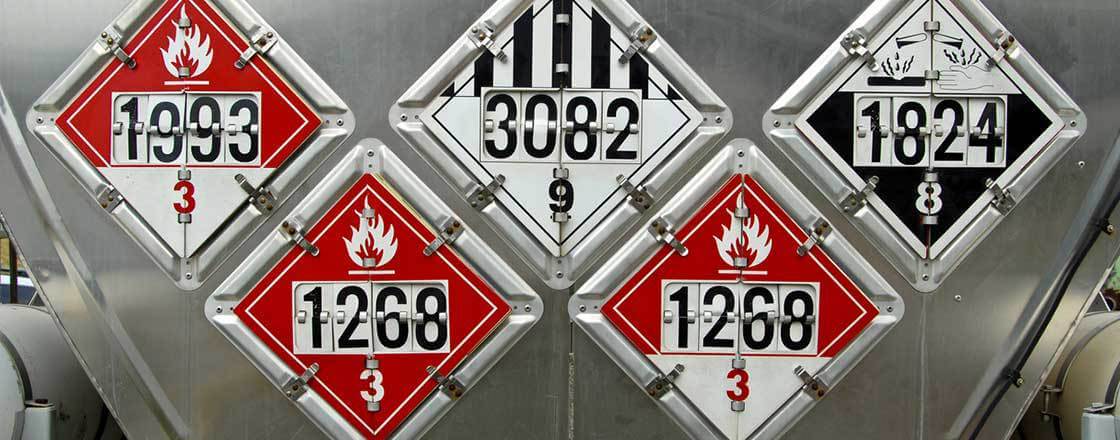Hazmat transloading is a service that you’ll likely require when shipping goods that are dangerous in nature or require careful handling. Fortunately, we have all the information a shipper or carrier needs to conduct hazmat transloading operations successfully.
The Department of Transportation (DOT) regulates the transport of hazardous materials, including services like hazmat transloading. Shippers must determine what hazmat class their goods belong to and find a 3PL qualified to perform hazmat services.
We’ll provide the details about these regulations and give you tips on how to find the right 3PL.

Why Transload Hazmat Shipments?
There are numerous benefits to using transload services for your hazmat shipments. For one, using transload services can save you a good amount of money. Certain forms of transportation, like vessels and rail, are much cheaper than truck. That said, trucks can reach places vessels and rail cannot, while aircraft shipping is faster than all three.
You can also save on costs that you would spend on storage. Transloading only stores goods for a short period, if at all, before the goods are loaded into another mode of transportation. Lastly, transloading can also be used for rework circumstances like correcting rejected shipments or consolidating multiple LTL shipments into one trailer.
As the table shows below, there are a lot of hazardous shipments taking place in the country. While it’s hard to give an exact number, it’s more than likely that many of these shipments were transload at some point or another during their shipping journey.
Amount Of Hazmat Shipments
| Amount Of Hazmat Shipments A Day | 800,000 |
| Hazmat Shipments Per Year In Weight | 3.1 billion tons |
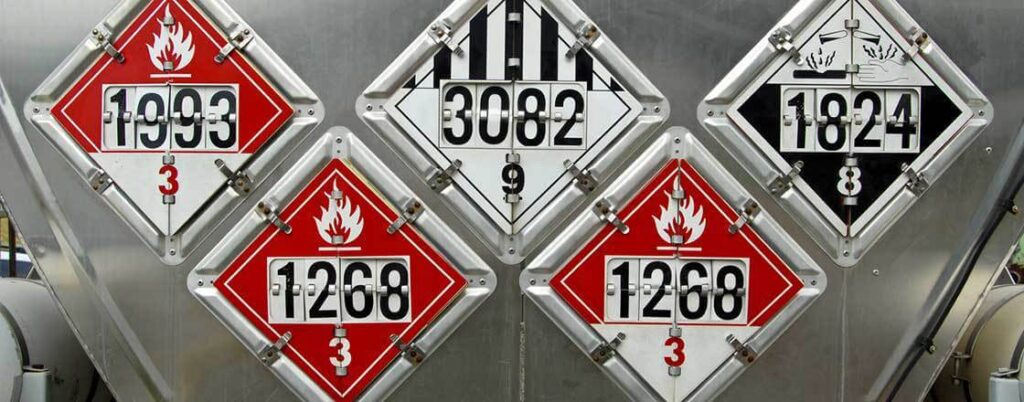
What Are the Classes Of Hazmat?
As a shipper that wants to use transloading services for their hazmat shipment, you will need to first establish what type of hazmat materials you’re shipping. This is an important responsibility warehouse workers need to know when they’re moving hazmat goods from one mode of transport to another.
There are nine different types of hazardous materials, each of which has its unique symbol. These types of hazardous materials are:
- Explosives
- Divisions 1.1, 1.2, 1.3, 1.4, 1.5, 1.6
- Gasses
- Divisions: 2.1, 2.2, 2.3
- Flammable liquid and combustible liquid
- Divisions: 3.1, 3.2, 3.3
- Flammable solids, spontaneously combustible and dangerous when wet
- Divisions: 4.1, 4.2, 4.3
- Oxidizer and organic peroxide
- Divisions: 5.1, 5.2
- Poison (toxic) and poison inhalation hazard
- Divisions: 6.1, 6.2
- Radioactive
- Corrosive
- Miscellaneous
In addition to these nine classes of hazardous materials, there’s also the general dangerous symbol that can be applied to any type of hazmat shipment. Once you’ve determined which class your hazmat goods fall under, you can move onto the transportation regulations that you need to follow.
If you’re having difficulty determining what class of hazmat your shipment falls under, consider a consulting session with the experts at Transload Services USA.

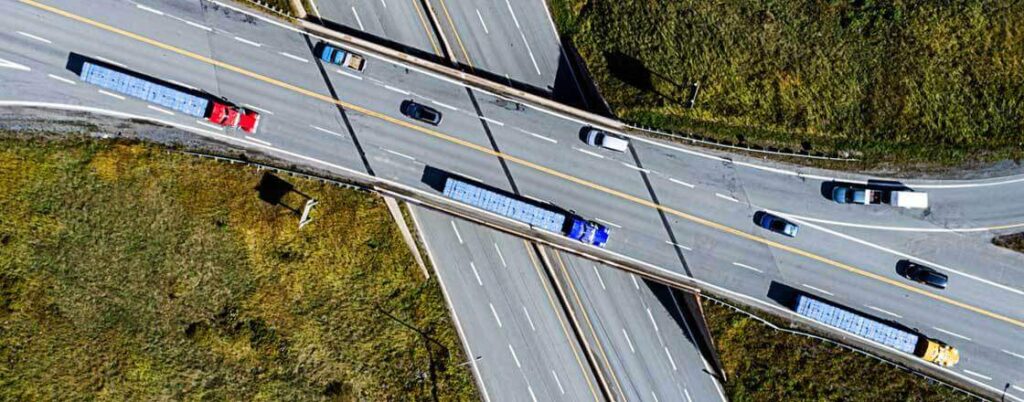
Hazmat Transportation Regulations
Title 49 of the Code of Federal Regulations (CFR) Subchapter C discusses the criteria for transporting and transloading hazardous materials. The regulations that we’ll discuss below are called hazardous materials communications and are located in section 172.202 of Subchapter C.
These regulations serve the purpose of communicating what type of hazardous materials are being shipped. Many of these responsibilities are shared by both shippers and carriers.
Shipping Papers
The purpose of shipping papers is to communicate what type of material is being transported and the details about the shipment. To ensure that you correctly fill out your shipping papers to the DOT’s requirements, include the following information:
- Identification number for the hazardous material being shipped
- The correct shipping name for the hazardous material being shipped
- The class of hazardous material or division number
- The roman numeral of the packing group the hazardous material belongs to
- Quantity of the hazardous materials being shipped (with the exception of aircraft shipments)
- In the case of aircraft shipments, the net mass per package of the hazardous materials must be included
- A simple, but clear description of the hazardous materials being shipped
As with classifying the class of hazardous materials being transported, shippers need to provide paperwork so that carriers and warehouse workers know what they’re handling. Carriers are also forbidden from transporting hazmat goods without proper documentation.
Markings
Markings are just another way for warehouse workers to identify that the package(s) they’re handling are hazmat materials. They’re used in conjunction with labels and placarding which we’ll discuss more below. Regulations for proper marking procedures vary between bulk and non-bulk shipments.
- Markings must include the correct shipping name and identification number of the hazardous material
- The technical name for the hazardous material must be included
- Hazardous materials that require a permit must have been marked with “DOT-SP” along with the number of the permit with it
- The name and address of the consignee or consignor of the hazardous materials shipment.
- Packages that were previously marked for the hazardous materials currently contained within it do not need to be marked again
- Unodorized liquefied petroleum gas cylinders are not permitted to be shipped unless marked with “NON-ODORIZED” or “NOT-ODORIZED” in letters 6.3 mm (0.25 inches) or height.
Bulk shipment regulations are fairly similar to that of non-bulk shipments and are easier to follow. For example, packaging for bulk shipments of hazardous materials only requires an identification number.
Markings for bulk shipment packaging do have to be larger than markings on non-bulk shipments, although how much larger varies based on the mode of transport. As with non-bulk shipments, bulk shipments need to adhere to special permit packaging regulations as well.
Need to transport butane or other hazmat gases? Check out our article on butane transloading.

Labeling
After dealing with marking regulations, you can now move on to the labeling requirements that will be expected of you. In general, hazmat labels are required for any hazardous materials shipment that falls under one or more hazardous material classes.
In some instances, there are some exceptions to labeling certain products. There are even some instances where labeling certain hazmat materials is prohibited. Determining when to label and when not to can change based on the materials you’re trying to ship.
These are the following labels that are used to identify the various types of hazmat shipments:
- Explosives 1.1, 1.2, 1.3, 1.4, 1.5, and 1.6
- Explosive subsidiary label
- Non-flammable gas label
- Poison gas label
- Flammable gas label
- Flammable liquid label
- Flammable solid label
- Spontaneously combustible label
- Dangerous when wet
- Oxidizer
- Organic peroxide
- Poison inhalation
- Poison
- Infectious substance
- Radioactive white-I
- Radioactive yellow-II
- Radioactive yellow-III
- Fissile
- Corrosive
- Class 9
- Lithium battery
- Cargo aircraft
- Empty
One thing that makes labels different from shipping papers and markings is that they offer instructions on how the materials should be handled. This is especially important for warehouse workers that are transloading the goods. With proper handling techniques, workers will stay safe and your goods won’t suffer unnecessary damage.
Placarding
Placards display most of the same information that labels do. One of the differences, however, is that placards are larger and even more durable than standard hazmat labels. Placards are placed on the following:
- Bulk packaging
- Freight containers
- Unit load devices
- Transport vehicle
- Rail cars
There are exceptions to placarding and even situations where placarding is prohibited, just like with labels. It’s up to you as the shipper to determine when placarding is required. The purpose of placards is to serve as giant caution signs to drivers on the road and can help emergency responders in the case of an accident.
It’s for these reasons that shippers and carriers are both responsible for placarding hazmat shipments. Should one or both fail, transloading services won’t be permitted.
Emergency Response Information
Providing emergency response information is the responsibility of the shipper of hazmat materials. If something goes wrong during a hazmat shipment, both the carrier and first responders must know how to respond. Emergency response information must include the following:
- A basic description of the hazardous materials and their technical name
- The immediate hazards to health caused by the hazardous materials
- If a risk of fire or explosion is possible
- Immediate precautions and written safety procedures to follow if an incident occurs
- Immediate method for handling a fire
- The initial methods for handling a spill or leak if a fire doesn’t occur
- Preliminary first aid measures to take
The emergency response information can be included with shipping papers, or as a paper by itself. Another requirement is to provide a telephone number in case an emergency takes place. This phone number must be maintained and someone should be on standby to answer while the hazardous materials are in transit.
If you need help adhering to any of these hazmat regulations, consider booking a consulting session with one of our experts at Transload Services USA

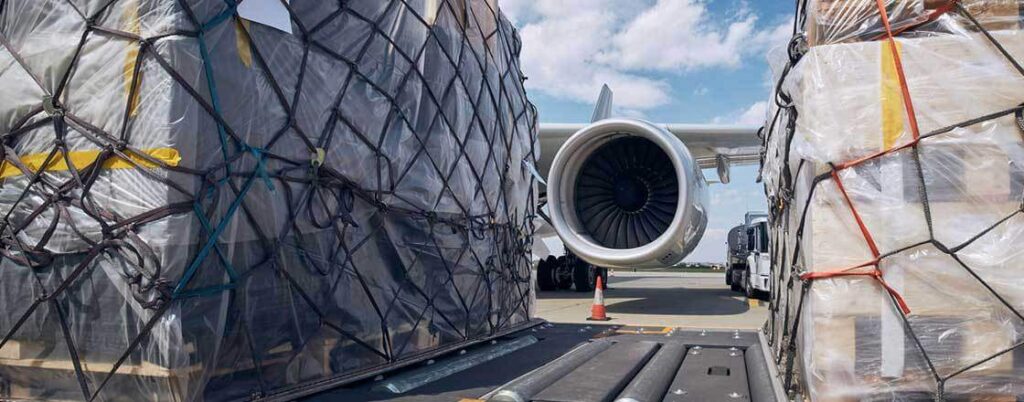
Finding A 3PL That Performs Hazmat Transload Services
Once you’ve completed all of the shipper regulations regarding hazmat requirements, you must find a 3PL that will perform transload services for hazmat goods. That way, your goods won’t be damaged and you won’t have to worry about your goods potentially causing harm to the warehouse workers handling them.
The problem is that even if a 3PL offers hazmat transload services, you won’t know from that information alone how up-to-date the provider is on regulations. It won’t give you an indication of how well they handle hazmat goods in their warehouse either. Therefore, you should ask some of these key questions to determine if the 3PL you’ve chosen can complete the hazmat transload services you need.
Ask About Hazmat Training Certifications
Any 3PL that provides hazmat transloading services will need to have employees that received the proper training to handle hazmat goods. When vetting a potential 3PL, you should verify with them whether or not the employees that will handle your hazmat materials are qualified to do so.
Not only do employees have to be trained in hazmat courses, but they also have to receive recurrent hazmat training at least once every three years. The 3PL should also have records on their employees that completed hazmat training with the following information:
- Hazmat employee name
- The most recent completion date of hazmat training
- Description, copy or locations of the materials used to train employee
- Name and address of the person that provided the training to the employee
- Certification that the employee was trained and tested on hazmat information
Requesting this information regarding hazmat training will help you determine if a 3PL is suited to provide transload services for your hazmat shipment.
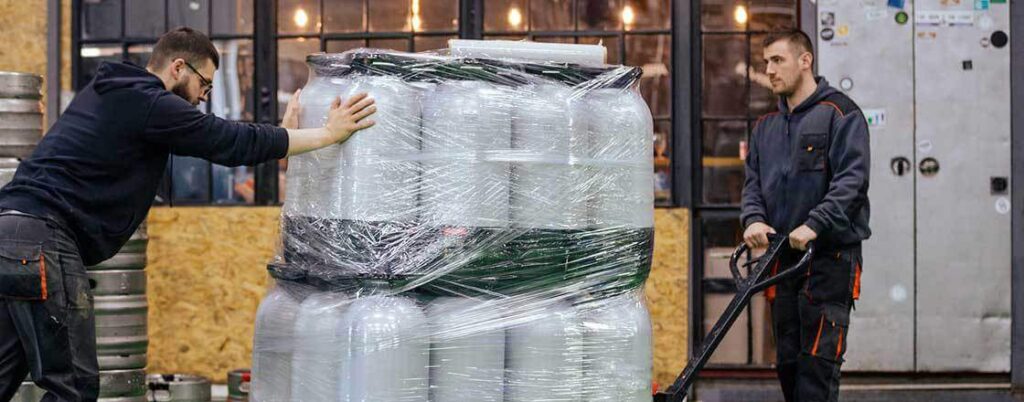
Determine If the 3PL You’ve Chosen Meets Separation Requirements
Hazardous materials have to be kept away from other types of freight. The reason being is that if a spill or leak in the hazardous materials occurs, other types of freight might suffer damage. Different hazmat materials should also be kept away from one another. Incompatible products could react negatively if they’re exposed to one another.
For this reason, many 3PLs that handle hazmat are sure to keep the products separated when storing them. That said, storage isn’t something you’ll need to worry about when using transload services. Nonetheless, you should make sure that the 3PL you’re interested in keeps hazmat materials separated from other goods.
While your goods won’t be stored for a long period, they’ll likely be sitting in a loading area before being loaded into the next form of transport. Even for this brief amount of time, hazardous materials should be kept as separate as possible from incompatible hazmat and other types of freight.
Does the 3PL Abide By OSHA’s Hazard Communication Standard?
OSHA’s Hazard Communication Standard (HCS) is multifaceted. Not only does it require employers to train their workers to handle hazardous materials, but the HCS also requires that employers provide safety data sheets (SDS) to their workers.
These SDSs help workers identify the potential dangers of handling hazardous materials. An SDS can serve as a quick reminder to employees caught up in their busy workflow to slow down and handle hazardous materials with care.
Is the 3PL Certified Up To Date On Transload Regulations Within Title 49, Subchapter 3?
Within Title 49 of the CFR, Subchapter 3, there are hazmat loading and unloading regulations for different modes of transportation. Within Subchapter 3, the following parts are where the loading and unloading regulations for different modes of transport are located:
- Part 174 Carriage by Rail
- Part 175 Carriage by Aircraft
- Part 176 Carriage by Vessel
- Part 177 Carriage by Public Highway
As another way of staying safe, 3PLs have their employees follow these regulations when loading and unloading hazmat materials. When inquiring to the 3PL about their loading and unloading methods, make sure that they follow these regulations.
Why Transload Services USA Can Transload Your Hazmat Shipments
At Transload Services USA, we have a qualified team that can transload your hazardous materials from one mode of transport to another. We can also provide cross-docking services in case you want to consolidate a load, have a rejected shipment or had a hazmat spill in one trailer and need to use another.
Our full suite of services includes:
Whatever your need is, get in touch and we can provide them for you with ease. Give us a call today at
(352) 282-4588 and set up your hazmat transloading appointment today.


